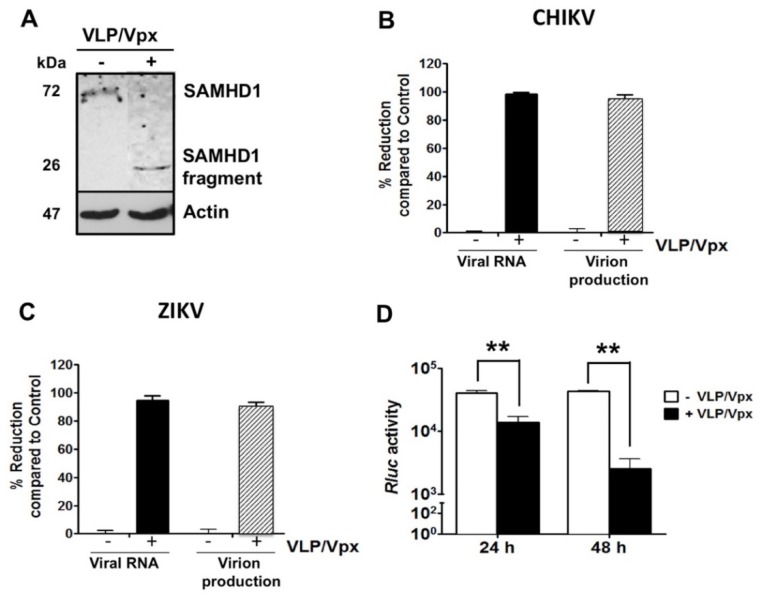Figure 4.
(A) Vpx-induced SAMHD1 degradation decreases CHIKV and ZIKV replication. Mock- (−) or VLP/Vpx-treated (+) HFF1 cells were infected with CHIKV for 48 h. Infected cells were lysed with TETN-150 and analyzed by immunoblotting using antibodies against SAMHD1 and β-actin. (B,C) Vpx-treated and mock-treated HFF1 cells were infected with CHIKV or ZIKV at MOI 1. After 48 h, intracellular viral RNA levels and infectious virus production were measured by real time RT-PCR (black bars) and plaque assay (gray bars), respectively. The percentage of reduction in the presence of Vpx was calculated using the formula [1 − (R/C)] × 100, where C and R designate experimental values (RNA copy numbers or plaque numbers) as a function of Mock- or VLP/Vpx-treated cells, respectively. (D) Stable Huh-7 cells harboring the CHIKV-NCT replicon were untreated or treated with VLP/Vpx. Twenty-four and 48 h post-treatment, cells were lysed and Renilla Luciferase (Rluc) activity was measured. Relative Rluc activity expressed by the CHIKV replicon represents the magnitude of CHIKV RNA replication. Values are normalized according to protein content of the cell extract and correspond to the mean of triplicates ± SD. The data represent the mean values ± SD from three independent experiments. ** p-value < 0.01, as compared to untreated cells.

